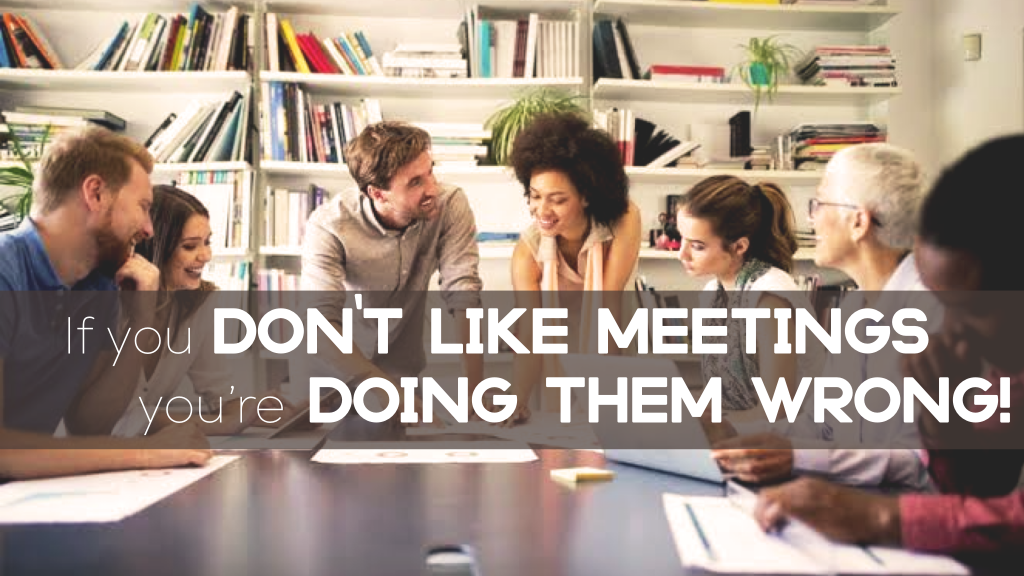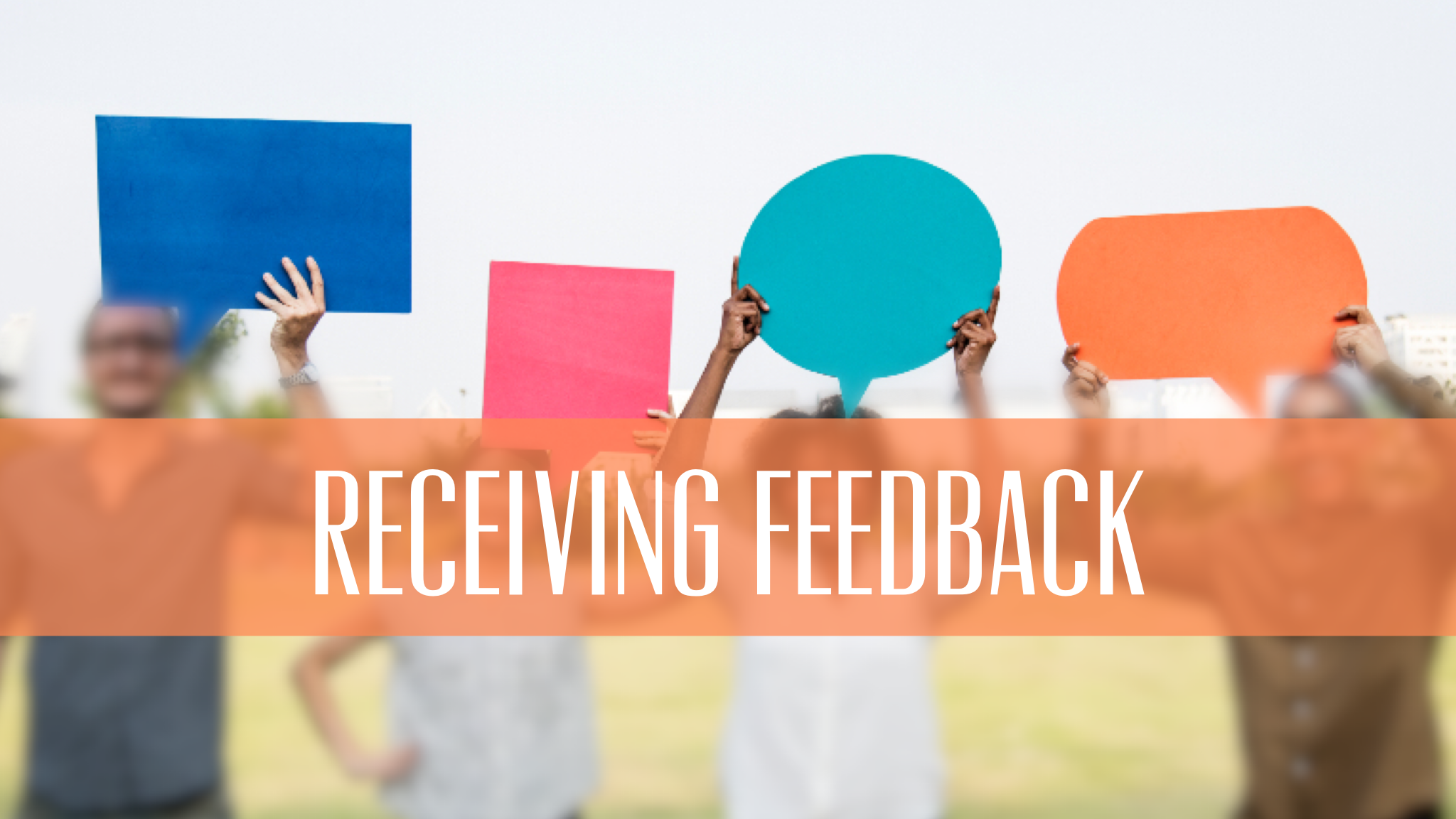“Death by meeting!” “Grrrr, I have to go to another meeting!” “Back to back meetings today, the worst!” Been there, felt that? Or at least heard it from others. Meetings can feel like the worst part of a job or a day. It can seem like they’re stopping you from getting stuff done. They can feel pointless or fruitless.
If that’s the case, you’re doing them wrong!

If you lead any people (or any thing), meetings can be the most powerful and effective tool in your leadership toolkit. In fact, organisational health specialist Patrick Lencioni says meetings are to a leader as surgery is to a surgeon. They are the place where all the skills, knowledge and expertise of a leader (or a surgeon) are demonstrated by doing what those skills, knowledge and expertise are designed to do.

The bad press meetings get is often less about the mechanism of a meeting itself and more about the mistakes we make or the lack of intentionality we apply when executing them.
Meetings bring your people together and so THEY should focus on doing what can only be done in person
Relationship and trust are the core, foundational characteristics of a healthy and productive team. As such, meetings should be leveraged for the ways they can contribute to a team’s relational culture. Building connection and trust is best done in person and so every meeting is an opportunity to strengthen relationships amongst your team (subsequently improving productivity, results and the felt experience of team members).
Sharing food, taking time to catch up on one another’s personal lives, learning more about each other, discovering differences and strengths, and deepening understanding of personal history and context are most successfully achieved in an in-person (or online as second best option) environment. Research also tells us that when people laugh together they will feel more relaxed and comfortable, they’ll have warm associations and memories of the team and gathering, and will trust one another more.
An intentional portion of a meeting and/or cultural expectation of meetings should be focussed on building relationship. For those who will struggle to find this “productive”, make it an agenda item that can be checked off! This will also lower participants’ fear that time is being wasted if it is an intentional and planned for element of your agenda and also part of what you are measuring in your meeting.
If it’s your meeting – ACTIVELY lead it!
Think back to some of the more frustrating meetings you’ve been in and they’ll no doubt include experiences like wandering off course, not following the agenda, unclear outcomes, mishandled conflict, one or two people dominating the conversation, unrelated content being tabled and given air time, presenters being unprepared or participants not equipped with necessary data or information or … I could go on but have probably already triggered some of you! But in your meeting, guess who is in charge of all of that. Correct, it’s you!
Participants will feel more safe and purposeful when a meeting is being well managed. Clear sign-posting language is key! “Now we move to agenda item C”, “That’s a great point but not our purview today, let’s note that for Thursday’s meeting”, “Let’s keep our answers brief in order to give everyone a chance to contribute”, and “So, this is what we’ve decided as our action step.”
DO NOT, I repeat, DO NOT check out of your own meeting! If you feel it’s got boring, irrelevant or uncomfortable in some way, imagine how those without leadership authority for the meeting might be feeling! Stay in the director’s chair and keep things moving. It will probably change your experience of the meeting as well as improving the experience for those attending.
Don’t do in the meeting what can be done by other means
In order to, as mentioned in point one, leave space for what can only be done when people are together, you’ll need to cull those things which can be done via other platforms.
Shared calendars or documents, email threads, and digital engagement platforms (Slack, Viva Engage, Whatsapp etc) are able to handle the transmission of facts, dates and data.
If (for example) an events calendar is available for all team members to access, sharing it in a meeting should be to add context or update changes, not just to read it out loud. Meetings are a good time to consolidate vision and mission and to check everyone is on the same page. Explanations or opportunities for clarifying questions are good. Reading large chunks of text or going too deep into the minutiae is a waste of the precious commodity that is your together time.
The planning portion of a meeting should be kept to a minimum. If a large event or project requires more team involvement it should have it’s own “planning meeting” or the time allocation should be well factored into the structure and communication of the meeting. (“This week we will be allocating time to plan for our upcoming super exciting event!”)
NOTE – Making this possible may necessitate an increased requirement of pre-reading, preparation or commitment to read and respond to other information as distributed. If some peopl come to a meeting unprepared, don’t punish the prepared ones by using meeting time to repeat what should already be known. Shape your culture by rewarding what you want repeated and having the “oh sorry, I didn’t read that email/article/memo” people feel the expectation to do so next time to more effectively contribute to the meeting.
Meetings can multiply impact
In a previous pastoral role I oversaw multiple ministries, programs and teams. In one instance, a regular hour long meeting with a key leader effectively “netted” me a 2 hour weekly program, significant leadership development for the members of her team and ongoing support and learning for her own development as a leader. When considered through that lens, that was potentially one of my most productive hours on my calendar!
A meeting should multiply your impact as a leader.
The investments you make in a meeting – creating healthy culture, networking team members to one another, offering learning and development opportunities, providing feedback and celebration, clarifying vision and purpose, food!!!, etc – can exponentially multiply your output beyond the chunk of time the meeting requires. As a team leader, 2 hours of effective investment in your crew will optimise the productivity of your team to achieve way more than you could possibly do in that 2 hours yourself. This is the way we must calculate the ROI of meeting time. The temptation to skip out on an hour long meeting must be hefted against the multiplication of impact lost.
Quick tips
Choose the right meeting for the specific context
A three minute standing meeting might be sufficient to keep a team moving day to day. Off site planning days have their place. Staff meeting over lunch can tick a lot of boxes at once. Varying levels of formality will be more appropriate for specific situations. Not every team, moment or decision requires a 2 hour all-in meeting. Assess the needs of the meeting and select the format that will best address them.
Don’t have people in the meeting that aren’t required
When you’re specific about what a meeting is seeking to accomplish you can be more selective in who is in attendance. Different teams and/or parts of teams will be more necessary to various stages of decision making or planning. Having the wrong people in the room could frustrate the process and frustrate them!
Prime your team members to the value of meetings
“I’m sorry to do this – a meeting is unavoidable – I know it’s annoying – I’ll try and make it as quick as possible – I’m just as irritated as you …” I already hate this meeting!! How we speak about meetings can shape the value we see in them and help orientate the expectations of our team members. “Let’s meet on this because there are important decisions to be made and you need to be part of that.” “I think if we allocate an hour to this we can identify some of the pain points and get our team back on track with this project.” “People have been working really hard on this, we need to celebrate them and help them see how their contribution is shaping our outcomes.”
Agree to rules of engagement
Value your team and their time, and build into a healthy relational culture, by having clear and implemented expectations. Speak to the behaviours and attitudes that can lead to the meetings after the meeting if they’re not addressed. The larger your team is the more articulated these expectations must be, but it is never advisable to assume everyone will contribute or behave the same way. Strong leadership is required to hold members accountable to agreed codes of conduct and to provide relational safety.


















